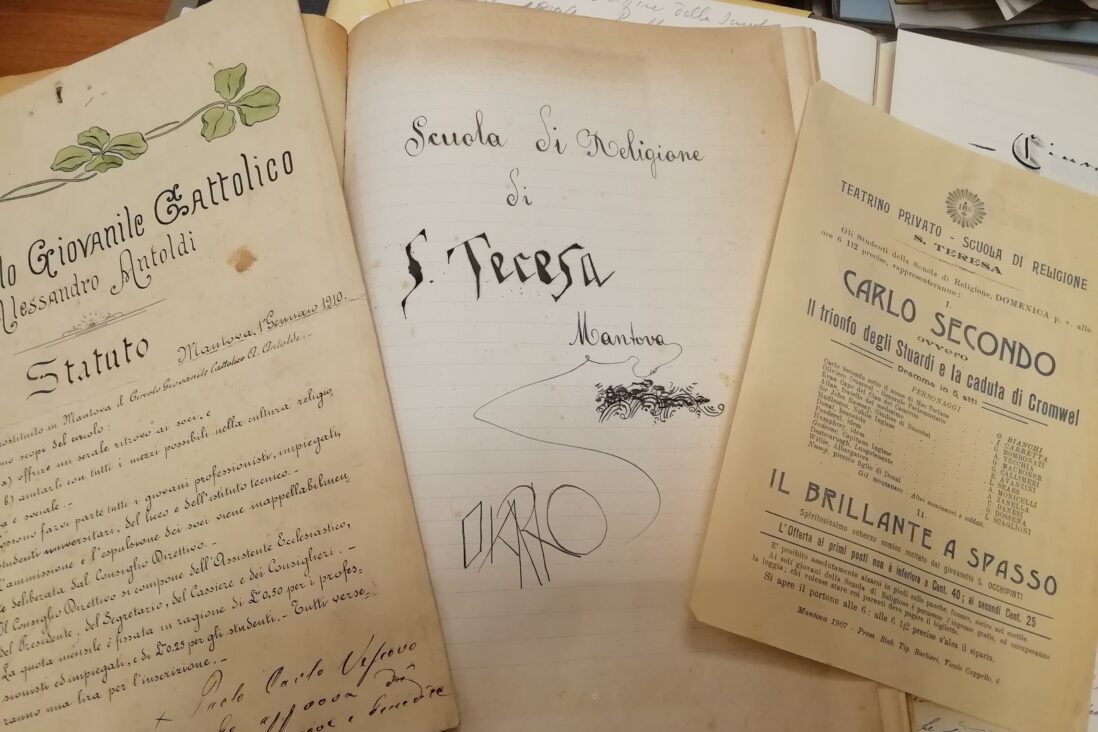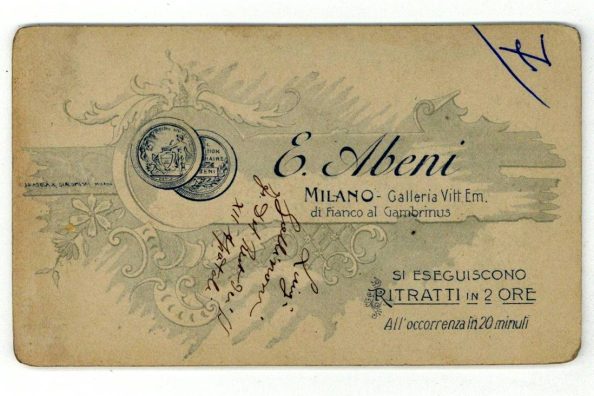Expenses of the Religious Education School in Mantua

The oratories and recreation centres of the Society of Jesus have always hosted children in preparation for Communion, Confirmation or after school. But what did it mean – in detail – to organise a school of religion?
For those who live in Mantua or have visited it, the church of St Teresa entrusted to the Carmelite fathers is perhaps familiar, while the presence of the Jesuits in the city, in the residence attached to that very church, may have been lost in the collective memory. In fact, the Jesuits left Mantua as far back as 1936, but in the long years in which they carried out their apostolate here since 1875.
Today’s column is not just about remembering the Jesuit community in Mantua, but about the organisation of the religious school, which opened in 1922: halfway between an after-school and catechism.
One might think that the Jesuits immediately equipped the school with books, desks and chairs, instead among the first expenses incurred by the fathers there are ‘doors for the ball game’, material for ‘the cinema system’, ‘a ball’, ‘little courtyard games with prizes’.
A piano also had to be a permanent guest, as the periodic expense of transporting and renting it is recorded: the ‘rental’. The wear and tear of the games by the boys constituted other expenses ‘repaired billiard cues’, and two months after the first one, ‘2 balls’ were bought again
In the months that followed, there was no lack of purchases for stationery and books, for the printer and the printing of booklets for the performances held in the theatre, for which ‘milk, sugared almonds and glasses of pastries’ were spent, and for the snacks prepared for children and young people. The photo shows one of the flyers advertising the performances and inviting parents and citizens to attend.
At the end of the year, as was also the case in boarding schools and apostolic schools, a play or performance was organised to award prizes to the best pupils; on this occasion – as the expense report shows – piano and violin teachers were hired, a piano was rented again, and medals were purchased to be distributed to the children.
“As many as 75 ‘breakfast loaves’ were counted, which indicates the number of boys enrolled in the school or taking part in recreational activities. Trips and journeys were then organised for all, such as the one to Brescia for the regional congress of Catholic youth in May 1923, or the pilgrimage to Le Grazie followed by ‘orangeade and raffle prizes’.
In the same month, a pack of cards was also needed. More ordinary expenses are also recorded, such as the electricity fee, the purchase of no less than 25 electric bulbs.
There are numerous minute expenses for the boys’ daily routine: a waxed canvas rug for the buffet table, two balls again in October 1923, also some registers, a new billiard stick, ‘renewing two ropes of the swing’, subscriptions to some magazines including ‘Zonda’, a broom, paints, brushes and paper for ‘scenery’ (the backdrops used in the plays) and the cost of maintaining objects and equipment ‘to mechanic Baraldi for work on the cinema machine, to Signor. Pettorelli for welding, to the blacksmith for welding and table repair”.
In addition, the ‘hire of beards, wigs and make-up necessities’ was indispensable for theatrical activities.
Acids for slides’ suggest the use of photography and the most advanced technology for the time, for lessons. Other expenses are also linked to the world of childhood: there are expenses r a chocolate breakfast (Easter gift)”, also for “a ball and various balls” and the “hire of films” which were certainly the biggest novelty of the time.
In these expenses, there is a special focus on childhood, play, and the care of the leisure time of children and young people often removed from the dangers of the streets.
Maria Macchi











